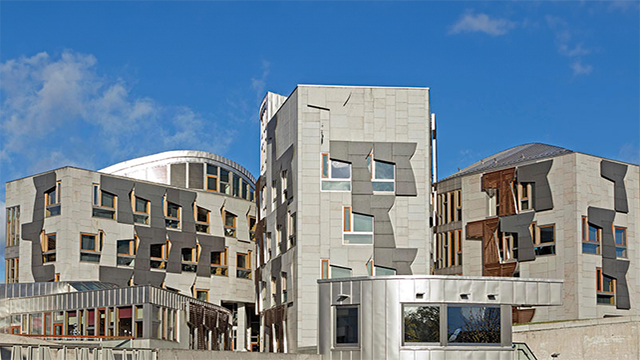Land registration – Alteration of register – Rectification for mistake – Para 5(a) of Schedule 4 to Land Registration Act 2002 – Part of applicant’s land included by mistake in first registration of title to adjoining land – Whether applicant entitled to rectification against purchaser of that title – Application allowed
The applicant held the paper title to an area of land that it had purchased in 1981 and on part of which it had constructed a block of flats and two shops. In 2007, the Land Registry allowed an application by the owner of an adjacent Salvation Army chapel for first registration of its title, proceeding on the evidence of a statutory declaration dated 1943. That title was sold to the first respondent in 2009 for £150,000.
Owing to uncertainty in the statutory declaration concerned the relevant boundaries, the registered title to the chapel had erroneously included land that fell within the applicant’s title (the disputed land). That land was not fenced off from the adjoining highway, although in 1985 the applicant had tarmacked it to provide parking for tenants of the flats and shops and had constructed a fenced laundry-drying compound for occupants of the flats. The shops and the majority of the flats were held by tenants on 999-year leases that included a right of way over the tarmacked area and the use of that area for parking. However, the applicant had not maintained the disputed area. It had become overgrown in places, although tenants still parked there, and the drying compound was rarely used for drying clothes but was occasionally used for dumping rubbish.
After acquiring the chapel in 2009, the first respondent sought to enclose the disputed land and turn it into a private car park. The applicant applied to the Land Registry for rectification of the register, under Schedule 4 to the Land Registration Act 2002, to remove the disputed land from the first respondent’s registered title. The application was referred to a deputy Land Registry adjudicator. The central issue was the extent of the power, under para 5(a) of Schedule 4, to alter the register for the purpose of “correcting a mistake” and whether it extended to restoring the applicant’s title to the disputed land against the first respondent as an innocent purchaser of that land. The Chief Land Registrar was joined as a second respondent so that he would be bound be the adjudicator’s decision as to the meaning and effect of the relevant provisions of the 2002 Act.
Held: The application was allowed.
(1) To the extent that the disputed land was included in the registered title to the chapel, title to it vested in the first respondent by virtue of section 58(1) of the 2002 Act. The applicant, although in possession of the disputed land, was not in occupation of the majority of it at the time of the sale to the first respondent in a manner that would have been obvious on a reasonably careful inspection. Accordingly, its interest in that land did not override that of the first respondent pursuant to section 29(2)(a)(ii) of, and para 2 of Schedule 3 to, the 2002 Act. The exception was the drying compound, which, on a reasonably careful inspection, was clearly being occupied as part of the common parts of the flats at the time of the sale to the first respondent, such that the applicant’s interest in it overrode that of the first respondent. The applicant was entitled to rectification of the register under para 5(c) of Schedule 4 to give effect to its absolute beneficial interest in the drying compound by removing it from the first respondent’s title and adding it to the applicant’s newly registered title. There were no exceptional circumstances that could justify a refusal to alter the register in that respect: Malory Enterprises Ltd v Cheshire Homes (UK) Ltd [2002] EWCA Civ 151; [2002] Ch 216 considered.
(2) With regard to the remainder of the disputed land, rectification was available to correct a mistake pursuant to para 5(a) of Schedule 4. In the absence of binding authority, the relevant provisions should be construed in a manner that gave effect to the intentions of the Law Commission in the bill it had drafted, so as to ensure that where parties were deprived by legislation of property to which they would otherwise have title, they should be compensated appropriately, at least if they were not at fault: Pinto v Lim [2005] EWHC 630 (Ch), Ajibade v Bank of Scotland plc unreported 8 April 2008 REF/2006/0163 and 0174) and Barclays Bank v Guy [2008] EWHC 893 (Ch); [2008] EWCA Civ 452; [2008] 2 EGLR 74; [2008] 25 EG 174 considered. That was so regardless of whether the party deprived was the original owner or the subsequent purchaser of registered land who found that its title had been removed by rectification and whether or not there was an error as to the amount of land included in the title. Any other result would fall foul of Article 1 of the First Protocol to the European Convention on Human Rights, unless the provisions of Schedule 8 were construed, in a manner that would stretch them almost to breaking point, so as to give the original owner a remedy by way of an indemnity. Schedules 4 and 8 needed to be read together for that purpose.
In light of the foregoing, either: (i) the original registration of the owner of the chapel with title to the disputed land was a mistake, which still persisted and which should be corrected by removing that part of the land from the title held by the fist respondent; (ii) the registration of the first respondent as proprietor of the land flowed from the mistake of including the land in the original title, and therefore should be treated as part and parcel of that mistake; or (iii) the registration of the second transfer to the first respondent was a mistake. Since the disputed land had continued to be in the applicant’s possession since 1985, and had been used by its tenants in accordance with the terms of their leases, para 6 of Schedule 4, limiting the power to rectify under para 5 in the case of rectification affecting the title of a registered proprietor in possession, did not apply in the instant case.
(3) There were no exceptional circumstances to justify a refusal to order rectification. Although the parking facilities that the disputed land afforded had been a significant factor in the first respondent’s decision to acquire the chapel and were useful to it, rectification should not be refused simply because an indemnity under Schedule 8 might not provide adequate compensation for the first respondent’s loss. It was normal for the purchaser of land to have a use for it and, particularly where only part of the land was to be removed from the title, it was common for the land to have a value to the purchaser, in conjunction with the remainder of the land acquired, that was not open to a monetary value and that might exceed any compensation payable. Moreover, the applicant’s assessment was using the land as a car park for the rest of its property and its tenants had right over that land that they might lose, or have greater difficulty in exercising, if the property were not restored to the applicant.
Andrew Gore (instructed by Bowser Ollard & Bentley, of March) appeared for the applicant; Stephen Jones (instructed by Fraser Dawbarns LLP, of Wisbech) appeared for the first respondent; Timothy Morshead QC (instructed by the Treasury Solicitor) appeared for the second respondent.
Sally Dobson, barrister










